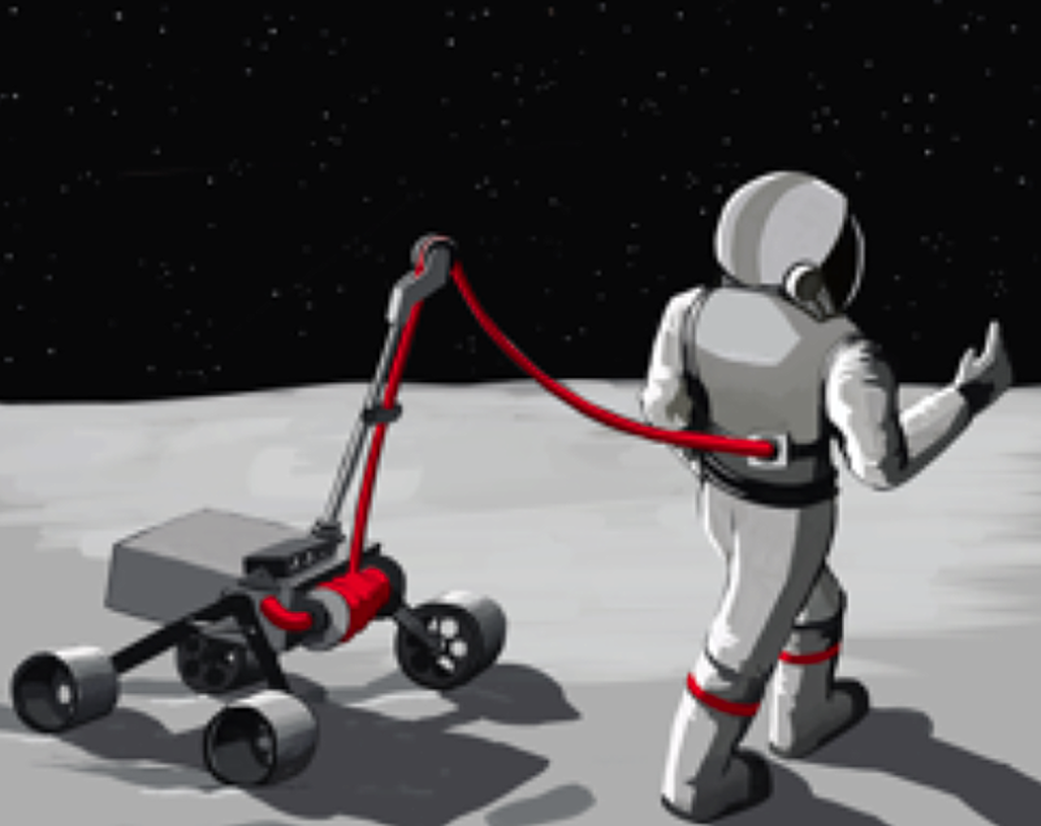David Akin
University of Maryland, College Park

No parameter in the design of spacesuits for planetary exploration is more important than “weight on the back”: the weight of the suit system which must be supported by the wearer under the gravity of the Moon or Mars. The added weight of the spacesuit garment andportable life support system (PLSS) drives the required exertion level of the wearer, and ultimately sets limitations on EVA duration, distance traveled on foot, and productivity of the exploration mission.
It is clear that planetary surface exploration activities would be greatly improved if the astronauts did not have to carry a PLSS to maintain life support functions. At the same time, additional restrictions on crew mobility, limits of access, and operational capabilities would be unacceptable. The concept for this NIAC proposal is to accomplish these two seemingly conflicting requirements through the application of advanced robotic systems to deal with biological requirements (i.e., life support) for the astronauts: the ‘BioBot’.
The design reference scenario for this concept is that astronauts involved in future lunar or Mars exploration will be on the surface for weeks or months rather than days, and will be involved in regular EVA operations. It is not unreasonable to think of geologists spending several days in EVA exploration each week over a prolonged mission duration, with far more ambitious operational objectives than were typical of Apollo. In this scenario, each astronaut will be accompanied by a ‘BioBot’, which will transport their life support system and consumables, an extended umbilical and umbilical reel, and robotic systems capable of controlling the position and motion of the umbilical. The astronaut will be connected to the robot via the umbilical, carrying only a small emergency openloop life support system similar to those contained in every PLSS. The robotic mobility base will be designed to be capable of traveling anywhere the astronaut can walk, and will also be useful as a transport for the EVA tools, science instrumentation, and collected samples, and potentially carrying the astronaut on traverses as well. Such as system will also be a significant enhancement to public engagement in these future exploration missions, as the robotic vehicles can provide high-resolution cameras and high-bandwidth communications gear to provide high-definition video coverage of each crew throughout each EVA sortie.
There are also architecture-level benefits to this concept. For example, in the drive to reduce suit weight to the absolute minimum due to the load of the PLSS, design elements which would enhance suit mobility (such as rotary bearings) are frequently deleted, resulting in a lighter but less flexible suit enclosure. By offloading the life support system electrical power, and consumables, the relatively meager increase in garment mass to incorporate these mobility features would be easily accommodated, resulting in not only a lighter, but also more flexible spacesuit system with an overall center of gravity very close to that of the wearer’s body. Since the PLSS weight restrictions would be negated by placing the system and its consumables on an accompanying robot, the overall EVA system could easily adapt to longer sorties, higher capacity astronaut cooling systems, or higher levels of redundancy to enhance crew safety and minimize the possibility of a loss-of-crew event. When no longer constrained to fit within the mass and volume constraints of a spacesuit backpack, portable life support designers can consider technology alternatives better suited to extended exploration, such as radiators for cooling, solar panels to extend electrical power, or regenerable CO2 scrubbing systems.





























